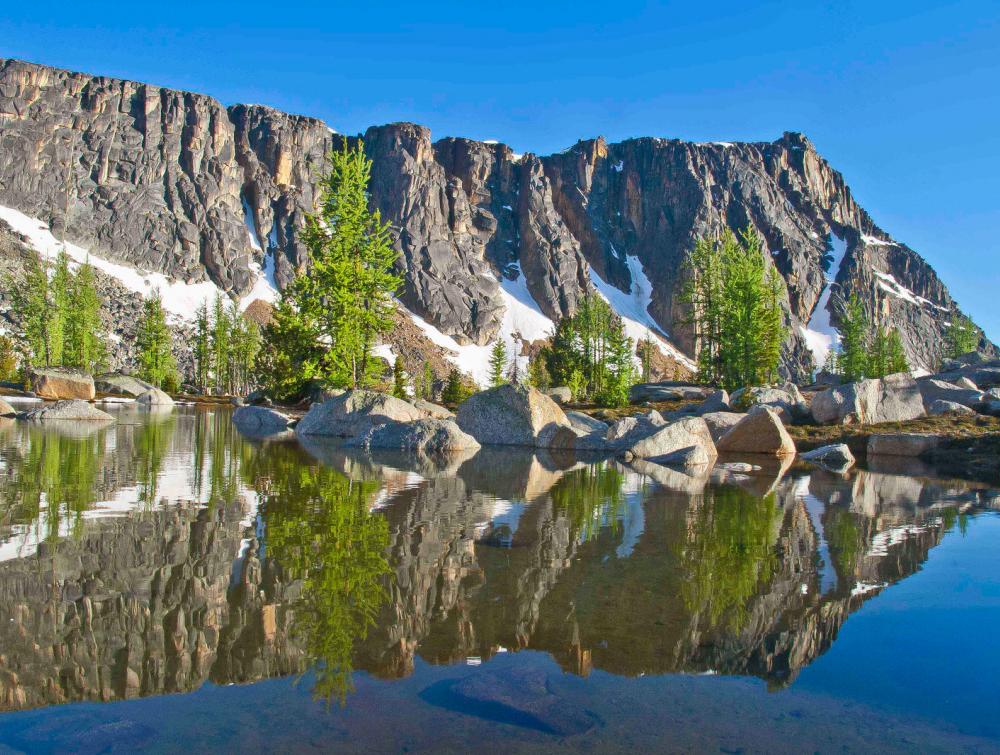10 best hikes in Pacific Northwest Wilderness

Andy Porter
Few places in the U.S. are more prized by the avid recreationist than the Pacific Northwest.
But with a plethora of places to hike, ski, boat and climb, how can one choose where to go? Designated Wilderness areas offer Americans places to find adventure, beauty and solitude, and this region has several to choose from.
Here's our recommendations on some paths for you to explore.
1. Alpine Lakes Wilderness, Washington
Even though the Granite Mountain Trail is a more strenuous hike, with a 3,800 foot climb over 4.3 miles, it is also one of the most popular in the Snoqualmie Pass corridor. If you want to hike this area, a week is suggested. It might be best to visit in late summer or fall due to avalanche risks, though early summer offers beautiful wildflowers.
2. Wild Sky Wilderness, Washington
The West Cady Ridge Trail is a journey through alpine meadows with summer flowers and fall colors. Berry bushes provide wild delights to wildlife and hikers alike. Stop to take in sweeping vistas after about four miles, or travel farther for even better views at Bench Mark Mountain (7.2 mile one-way trip). A Northwest Forest Pass is required.
3. Spring Basin Wilderness, Oregon
Designated in 2009, this area has it all: colorful geology, quiet canyons and wild waters. A diversity of wildlife includes golden and northern bald eagles as well as bobcats. "Trails" here consist of a few old four-wheel-drive tracks utilized as pathways. Hay Bottom and Eagle Canyons are great for solitude and photography. While splendid views abound year round, some think spring is the best time to visit.
4. Oregon Badlands Wilderness, Oregon
This area was also protected in 2009, preserving the remarkable features of the Badlands volcano as well as cracked volcanic pressure ridges. Yellow-bellied marmots, prarie falcons and antelope call this place home. Fifty miles of trails over flat lands offer the visitor many opportunities for solitude, hiking and horseback riding. But few trail markings mean some navigation skills will be necessary. Badlands Rock Trail leads to incredible 360-degree views of the region.
5. Pasayten Wilderness, Washington
The northernmost forty miles of the Pacific Crest Trail (PCT) winds through the wildlife-rich Pasayten offering spectacular views of Mt. Baker, North Cascades National Park and the Picket Range. For a shorter ten-mile hike, start at the Cold Springs entrance to the eastern Pasayten Wilderness via Chopaka Mountain and Goodenough Park. If you’re looking for a longer trip across the entire Pasayten, you can travel 80 or more miles from Hart’s Pass north on the Pacific Crest Trail then east on the Pacific Northwest Trail (also known as the Boundary Trail in the Pasayten) to the Iron Gate trailhead. This stretch is not only very long but also very strenuous, and therefore recommended for only experienced backcountry travelers.
6. William O. Douglas Wilderness, Washington
Neighboring Mount Rainier National Park, the Wilderness' southern portion is replete with lakes, ponds and pools. Hikers may spy elk, foxes, mountain goats and grouse. Snow may last from November until midsummer. Sixty-six trails add up to 250 miles for hikers and horsepackers. Weekend warriors will love the 29.5-mile leg of the PCT from White Pass north to Chinook Pass, which crosses delightful meadows north of Crag Lake, where blueberries grow in late summer. (photo at right: Flickr, brewbooks)
7. Sky Lakes Wilderness, Oregon
This special place's name is no joke - there are literally hundreds of lakes on this 6,000-foot plateau. The view from Mt. McLoughlin showcases a volcanic landscape, accessible via a 3.5-mile trail off the PCT. Take Isherwood Trail for fishing and swimming treasures and Red Lake Trail to secluded campsites. To beat the bugs - and score some ripe huckleberries - visit in late summer.
8. Wild Rogue Wilderness, Oregon
The 40-mile Rogue River Trail, one of many National Recreation Trails, provides access to the river corridor, the Panther Ridge Trail leads visitors to stunning views at Hanging Rock, and the Mt. Bolivar Trail takes hikers up to the 4,319-foot summit. Known as "the Rogue" this wild fishery is also popular for rafting and kayaking.
9. Devil's Staircase Proposed Wilderness, Oregon
Nestled deep in the rainforests of Oregon's coastal mountains is the region's last remaining old-growth forests. The area is named for a waterfall of legend in the hard-to-reach Wassen Creek area, where cascading pools are alive with native coho and chinook salmon, trout and steelhead fishes. With the highest density of northern spotted owls in the Coast Range, this legislation is critical to the recovery of this threatened species. Other wildlife living here include black bears, elk, river otters and marbled murrelets.
10. Salmo-Priest Wilderness, Washington
Bordering Idaho, this Wilderness is the largest virgin forest left in eastern Washington. It gets more than 50 inches of precipitation every year, with snow blanketing the ground until early July at high elevations. Some rarely-sighted, threatened species like woodland caribou, grizzly bears and gray wolves roam this wild land. The scenic ridges of the Pacific Northwest Trail (PNT) wind through here, offering hikes through a forest with cedars up to eight feet in diameter. (
